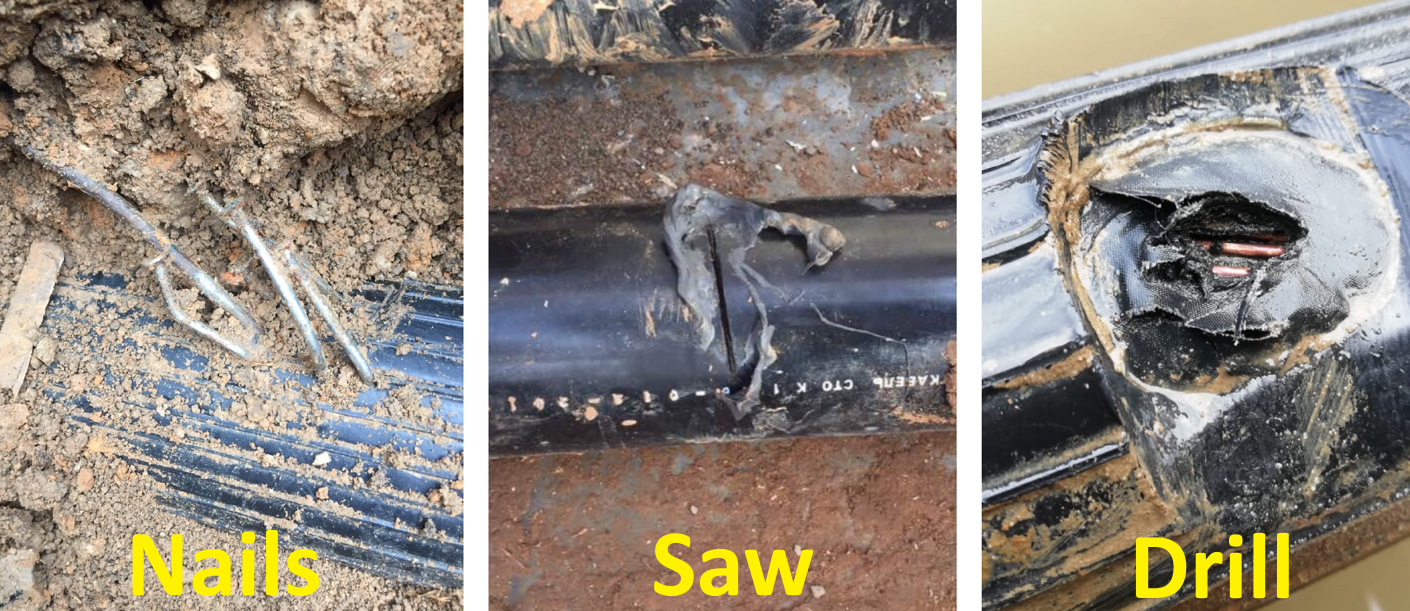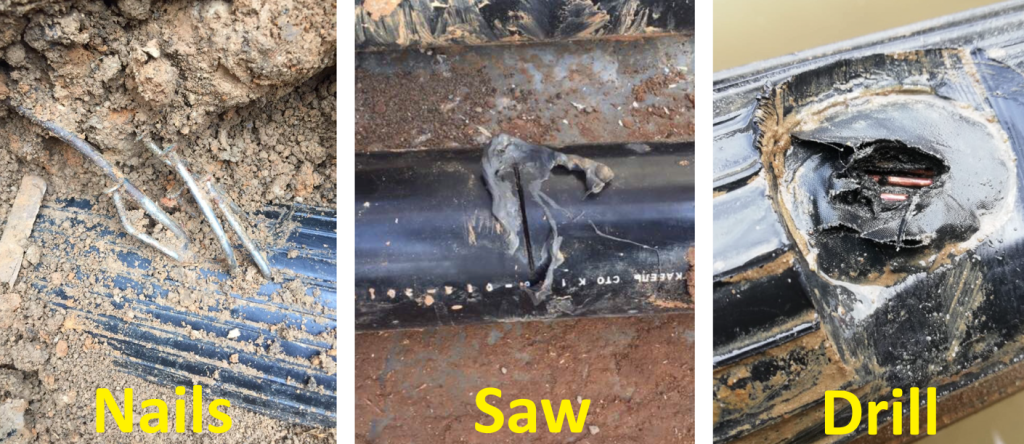
Bad guys VS cables
We usually think that the core and its XLPE-insulation play the main role in the cable design. At the same time, we perceive the metal screen (Cu, Al) and the outer sheath (PE, PVC, etc) as secondary elements of the cable. It’s a serious mistake.
SCREEN. As already shown in previous posts, in normal operation mode in many cases, the cable screen is the main source of heating of the cable. That is, the temperature of the cable is determined not by the core, but by the screen. Incorrect selection of the screen cross-section and its bonding/grounding scheme can lead to dangerous overheating of the cable and the need to replace entire sections of the cable route. The same applies not only to the normal operation mode, but also to the consequences of short-circuit currents passing through the screens when the cable XLPE-insulation get fault.
OUTER SHEATH. Outer sheath damage can lead to water penetration into the cable, the growth of «water treeings» in the XLPE-insulation and the appearance of short-circuits there, followed by expensive repairs. The cable outer sheath damages are extremely diverse. As a rule, they are associated with violation of the conditions for laying cables. However, there are many cases when the outer sheath is damaged due to the actions of third parties.

BAD GUYS. The photos show examples of third parties:
1️⃣ Nails are hammered into the cable, but no as deep as it’s necessary to get the XLPE-insulation short-circuit. This may be done by people who are dissatisfied with the working conditions in the installation company. Most likely it’s done before the line is put into operation («bad guys» doesn’t mean «stupid guys»).
2️⃣ The cable is cut with a saw. This may happen when the cable is laid in a pipe, and it is required to open this pipe – then the pipe is cut with a saw, which can lead to the fact that the cable will be accidentally touched. Also, the option of a intentional cut is not excluded (by analogy with bad guys from case 1).
3️⃣ The cable is drilled. This happens when third parties, ignoring the terrain plan, conduct excavation work in the cable laying area. It may also be because the location of the cable underground turned out to be different from the design one – this may happen in the case of extended HDD-sections, when the drilling rig has an error and is able to “walk” up to several meters to the left or right. Therefore, after laying pipes in the ground, it is recommended to make a trace to determine and fix the actual location of the pipes on the ground.
CONCLUTIONS. It is very important:
✅ to be confident in the people who work with cable;
✅ to guard the cables according to the rule 24/7 until they are buried;
✅ to put on the plan not the desired, but the actual location of the cable sections in the pipes, determined as a result of pipe tracing;
✅ to do periodic cable outer sheath tests (DC 10 kV, 1 min) in order to find damages as soon as possible.
